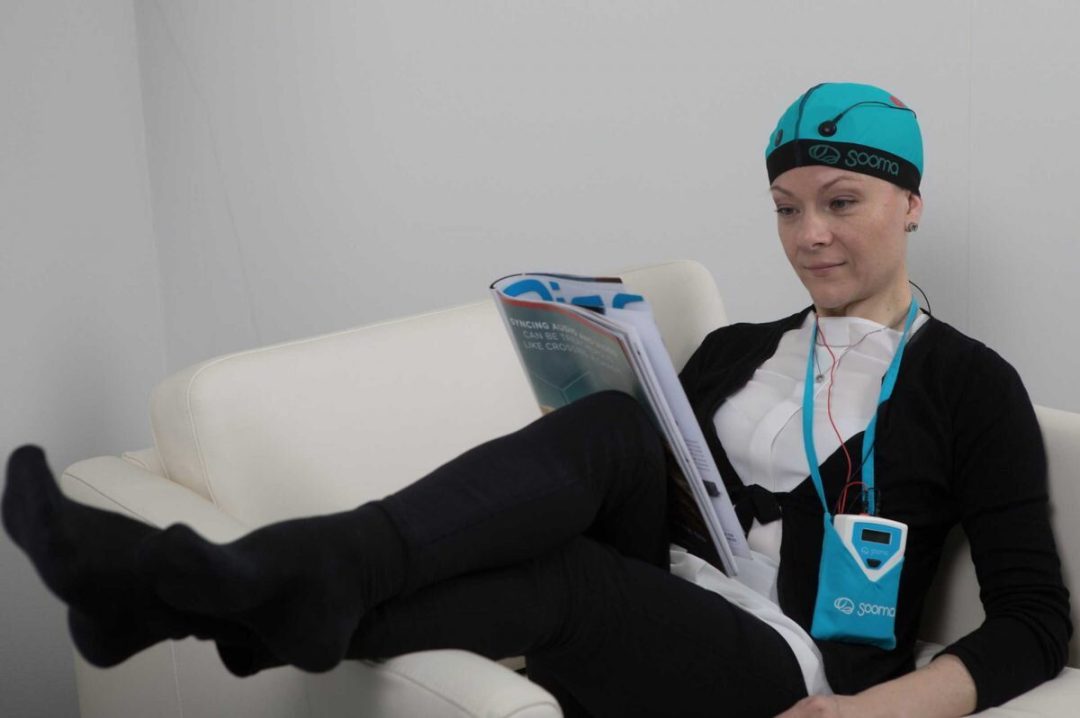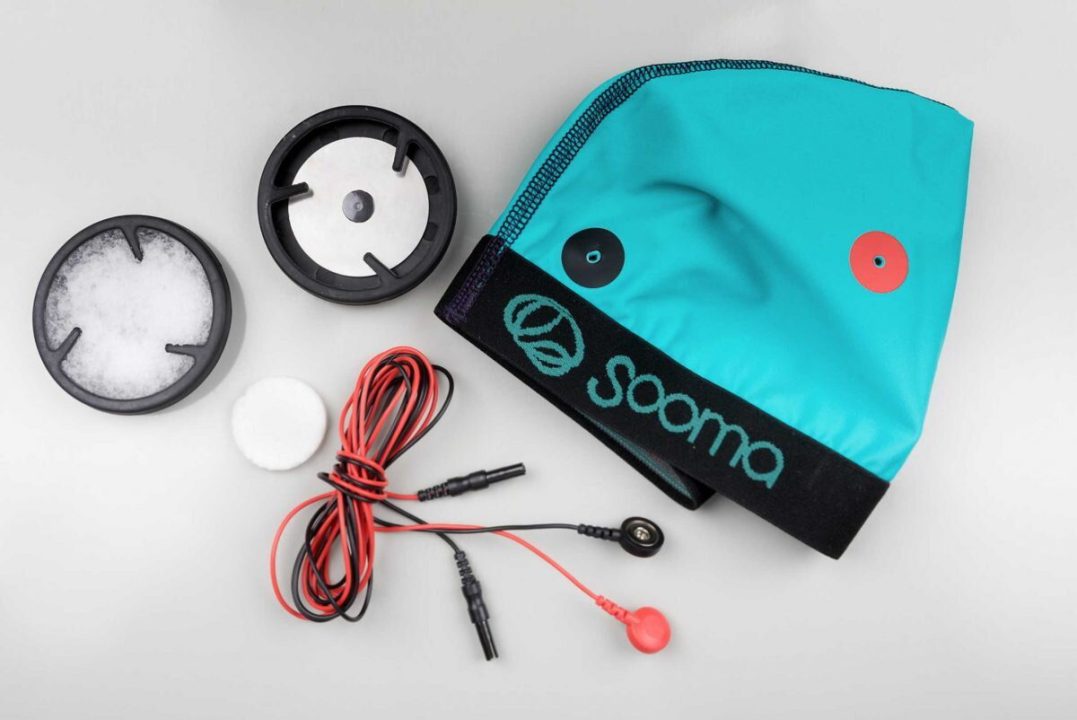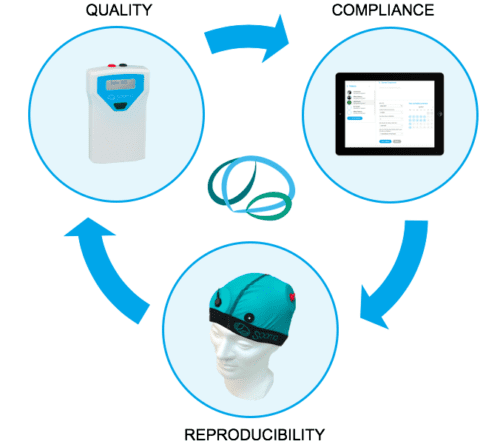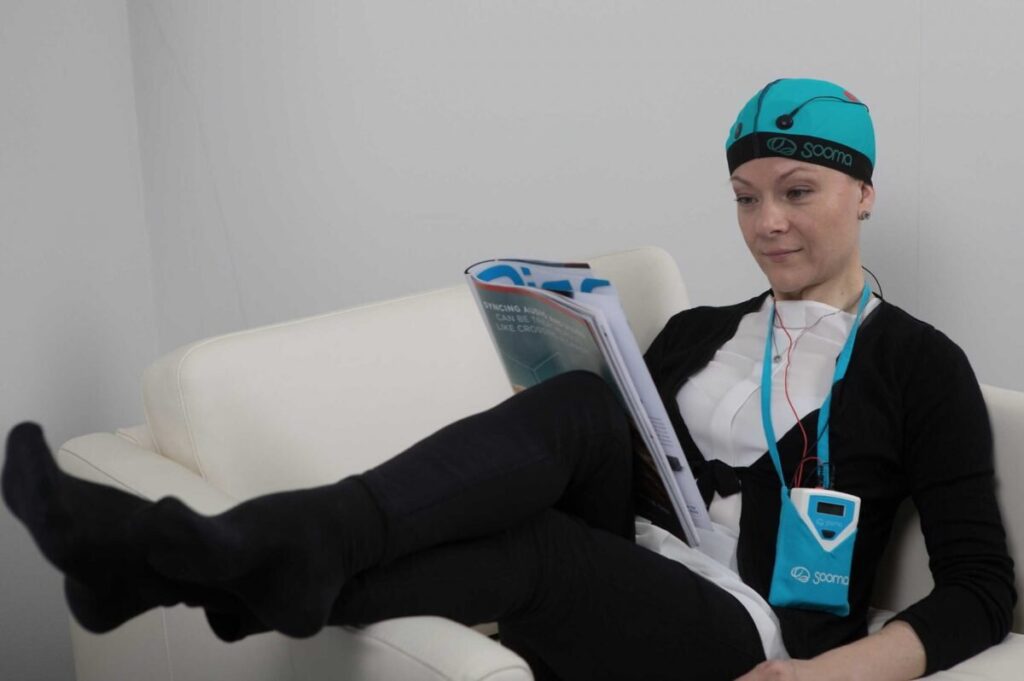
By Simon DuBois, Psychologist
The idea that an electric current through the brain might improve its functioning isn’t new. The physician of Roman Emperor, Julius Caesar described how placing live torpedo electric fish over the scalp could relieve headaches (1) . Most people associate brain stimulation treatments with electro-convulsive therapy – a psychiatric therapy brought to infamy by movies such as One Flew Over the Cuckoo’s Nest and Return to Oz, that uses very high current levels (around 800 milliamps) to ‘shock’ the brain. In contrast, Transcranial Direct Current Stimulation (tDCS) is a novel treatment using a very weak electric current (2 milliamps) to stimulate the neurons of interest creating neuroplasticity.
The idea behind tDCS is as follows: Your brain is a vast interconnected circuit of around 100 billion neurons. Each neuron has around 7000 synaptic connections to other neurons, adding up to over 1000 trillion connections. The neurons communicate with each other via electrical discharges. Applying a weak current can make the targeted neural pathways more or less likely to fire, in other words, strengthening or weakening the synaptic transmission, which is the cellular basis of learning.
What is tDCS?
Transcranial Direct Current Stimulation (tDCS) is a form of non-invasive brain stimulation that uses a weak electric current to create functional changes (i.e. neuroplasticity) in the underlying brain tissue. A tDCS device is a small battery powered device with two connected electrodes that are placed on the scalp and held into place. When the stimulator is turned on, current flows from the device to the electrodes and subsequently through the brain.
tDCS is a safe, painless and well-tolerated procedure that has been shown to provide relief in many people with chronic conditions such as depression and pain. Most people describe tDCS as feeling like a tingling sensation. Please see below for its potential side effects.
The Health Lodge uses Sooma tDCS™ technology developed in Finland. This is a medical device used by healthcare professionals worldwide and has TGA approval in Australia.
What is the evidence?
Over the last few decades, research has shown tDCS to be a novel, effective, and affordable treatment of major depressive disorder, with no major side effects. Reviews of randomised controlled trials of tDCS in depression found that stimulation of the left frontal lobe led to a significant reduction of depressive symptoms compared to a placebo treatment (2-4), with similar efficacy to anti-depressant medication (5). The most recently published treatment outcomes of Sooma tDCS™ Depression Therapy are based on 302 patients from 10 clinics worldwide, who have been treated with the therapy. The outcomes showed a 61% response rate and 20% complete remission after three weeks of treatment (6).
tDCS has also been shown to be an effective opioid-free pain relief to patients with chronic pain conditions, with no adverse effects. Studies have found that tDCS over the primary motor cortex led to significant reductions in pain compared to a placebo treatment in patients with fibromyalgia (7) and neuropathic pain after spinal cord injury (8). The therapy has also led to significant quality of life improvements in patients with chronic neuropathic pain (nerve pain) (9).
Encouraging results have also emerged for its benefits in people with dementia, Parkinson’s disease, tinnitus, anxiety, obsessive compulsive disorder (OCD) and substance use disorders. Further research is needed though to prove its clinical efficacy in these other disorders.
What does a tDCS treatment program look like?
tDCS treatment is typically applied for 20-30 minutes, 5 days a week, for a minimum of 2 weeks. A cap with two electrodes is placed over the head, while you sit in a comfortable chair. You are completely alert and awake during the treatments. tDCS treatment can be used as a standalone or in combination with pharmaceutical and/or psychological therapy.


What are the benefits of tDCS?
Positive effects of tDCS have been shown in just two to three weeks in the treatment of depression and pain. Unlike pharmacological treatments there have been no serious side-effects reported from tDCS in 20 years of scientific studies. tDCS is painless and can be used to augment medication or psychotherapy, or as a treatment on its own. Patients who do not get an adequate response from medication may also benefit from tDCS therapy.
What are the side effects?
The most common side effects of tDCS are mild and short-lived. The side effects include skin reddening, itching, tingling, headache and discomfort. In the 2015 tDCS review and recommendations from an expert panel document, there were no serious events attributable to tDCS reported in more than 10,000 subjects investigated in the contemporary tDCS literature (between 1998-2004). Nonetheless, there are safety parameter guidelines for treatment that are followed in by our clinic.
Who can use tDCS treatment?
We are currently providing tDCS treatments to clients diagnosed with major depressive disorder and chronic pain. Contraindications for the therapy are metal implants within the skull, a pacemaker, head/brain surgery within the last 6 months, and acute eczema in the stimulation area. As there is currently little research into treating children/adolescents, we are only using tDCS treatment in adults who are able to give informed consent in our clinic. Our psychologists Simon DuBois and Cara Wong are trained in this psychological approach. Please contact our Client Support Team on 02 6685 6445 for more information.
References
(1) Sarmiento, C. I., D. San-Juan, and V. B. S. Prasath. “Letter to the Editor: Brief history of transcranial direct current stimulation (tDCS): from electric fishes to microcontrollers.” Psychological medicine 46.15 (2016): 3259-3261.
(2) Meron, Daniel, et al. “Transcranial direct current stimulation (tDCS) in the treatment of depression: systematic review and meta-analysis of efficacy and tolerability.” Neuroscience & Biobehavioral Reviews 57 (2015): 46-62.
(3) Mutz, Julian, et al. “Efficacy and acceptability of non-invasive brain stimulation for the treatment of adult unipolar and bipolar depression: a systematic review and meta-analysis of randomised sham-controlled trials.” Neuroscience & Biobehavioral Reviews 92 (2018): 291-303.
(4) Shiozawa, Pedro, et al. “Transcranial direct current stimulation for major depression: an updated systematic review and meta-analysis.” International Journal of Neuropsychopharmacology 17.9 (2014): 1443-1452.
(5) Brunoni, Andre R., et al. “Transcranial direct current stimulation for acute major depressive episodes: meta-analysis of individual patient data.” The British Journal of Psychiatry 208.6 (2016): 522-531.
(6) https://soomamedical.com/wp-content/uploads/2019/06/C17A09-EN-White-paper-1.pdf
(7) Zhu, Chang-E., et al. “Effectiveness and safety of transcranial direct current stimulation in fibromyalgia: a systematic review and meta-analysis.” Journal of rehabilitation medicine 49.1 (2017): 2-9.
(8) Mehta, Swati, et al. “Effectiveness of transcranial direct current stimulation for the management of neuropathic pain after spinal cord injury: a meta-analysis.” Spinal Cord 53.11 (2015): 780.
(9) Baptista, Abrahão Fontes, et al. “Latin American and Caribbean consensus on noninvasive central nervous system neuromodulation for chronic pain management (LAC2-NIN-CP).” Pain reports 4.1 (2019).



